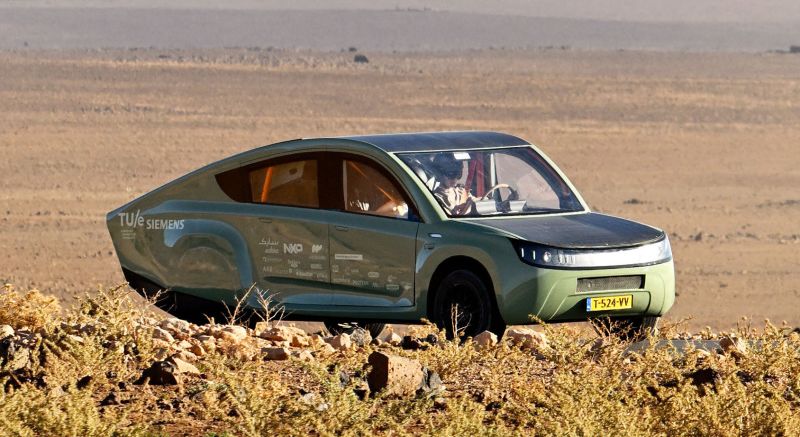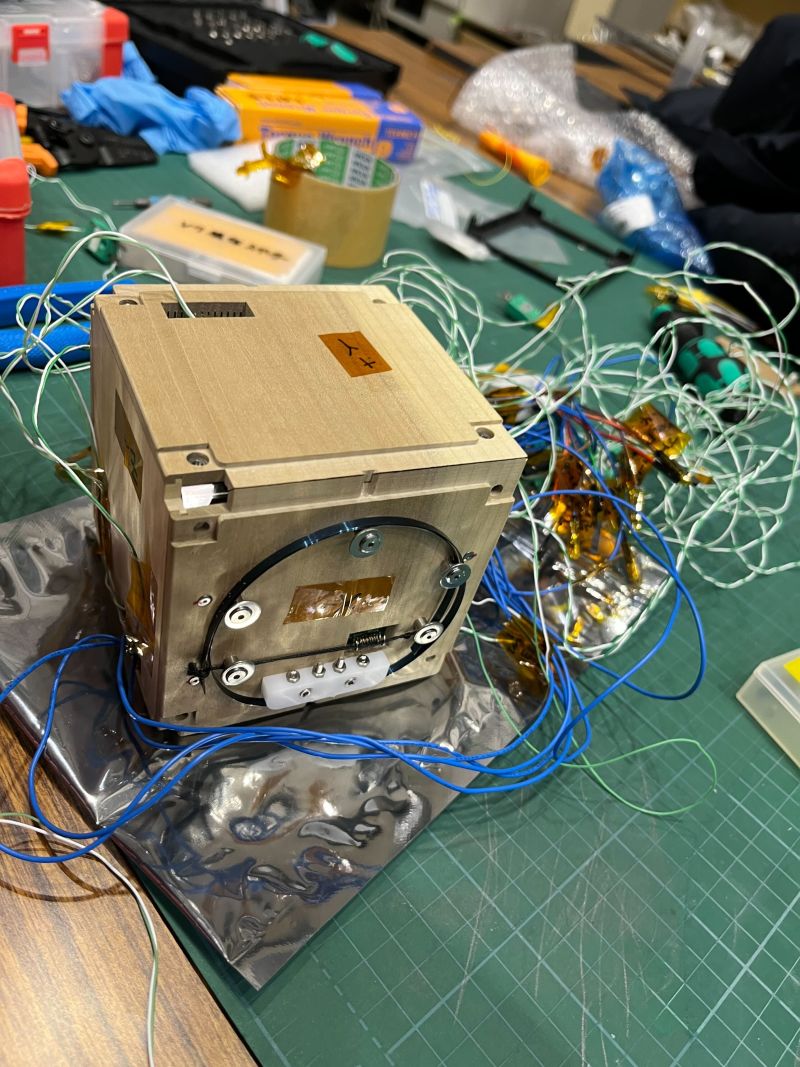
Data centers housed within wind turbines for reduced emissions: A groundbreaking project

WindCORES operates data centers inside wind turbines in Germany, drastically reducing carbon emissions By harnessing renewable energy, their innovative approach ensures near carbon-neutral operations
The Call to Earth, a CNN editorial series, is dedicated to covering the environmental challenges that our planet is facing and the solutions to those challenges. Rolexs Perpetual Planet initiative has teamed up with CNN to promote awareness and education about important sustainability issues and to encourage positive action.
Data centers are contributing to the climate crisis by accounting for approximately 1.5% of global electricity use. Currently, there are over 8,000 data centers worldwide, and more are being planned each year to support the increasing demand for global digital services.
The company WindCORES, a subsidiary of German renewable electricity company WestfalenWIND, has taken the initiative to reduce their carbon footprint even further by locating data centers inside wind turbines in a wind park in the Paderborn district in western Germany. This innovative approach has made the data centers nearly carbon neutral.
Fiete Dubberke, managing director of windCORES, founded in 2018, stated that the highest form of sustainability, according to the sustainability pyramid, is utilizing existing resources. The company's concept involves using existing wind turbines to power on-site data centers, with a constant internet connection provided by fiber optic cables. Planning for this project began a decade ago, when WestfalenWIND recognized that their electricity grid was insufficient to handle the high capacities of electricity produced by their wind turbines during peak wind hours, resulting in their windfarms being shut down due to grid security issues. WindCORES estimates that the unused electricity generated during these periods could power one-third of all German data centers.
Its solution was to bypass the "middleman" (the grid) altogether, and instead, power IT servers from directly inside the large concrete wind turbine towers. Each tower is 13 meters wide and could potentially hold server racks up to 150 meters high. As the area is mostly empty space, Dubberke calls the concept a "no-brainer."
By utilizing existing wind turbines, windCORES says it creates a sustainable business practice.
windCORES
Dubberke stated that 85-92% of the power needed to sustain a windCORES data center comes directly from the host turbine, with electricity obtained from other renewable sources when there is no wind. He also noted that the average CO2 released per kilowatt hour for German data centers is 430 grams, while windCORES is calculated at just 10 grams.
Streaming
windCORES has attracted approximately 150 clients since its inception, offering co-location and cloud solutions to a wide range of businesses. These clients include both small start-ups and larger, more established companies such as Zattoo, a prominent Swiss TV streaming platform that is committed to carbon neutrality and serves millions of users every month. Zattoo became a windCORES client in 2020, when it decided to transfer one of its six data centers to a wind turbine located in Paderborn. Currently, windCORES encodes 218 channels for Zattoo, and the company aims to further consolidate its servers at the wind farm, making it Zattoo's primary data center location by the end of the next year.
Embarking on a road trip through Morocco, Stella Terra is the world's pioneering off-road solar-powered car. Designed by the student team Solar Team Eindhoven, Stella Terra represents a breakthrough as the first solar car capable of withstanding rugged terrain while maintaining high energy efficiency. Through this achievement, the students are driving progress towards a more sustainable future, prompting both society and the current market to expedite the transition to a sustainable future.
STE/Bart van Overbeeke
Worlds first off-road solar SUV just drove across Morocco powered only by the sun
Viliyana Ivanova, the engineering director overseeing operations for the windCORES project at Zattoo, has expressed confidence in the concept, citing its reliability and alignment with Zattoo's key objectives.
"We embarked on this project and invested time to make it work primarily because of its green credentials," she explained. "Other large data centers claimed to use green energy, but lacked transparency in providing reports for our own calculations. Our goal is not just to communicate our green efforts to customers, but to validate our commitment to sustainability."
Viliyana, the streaming company with multiple live channels that run non-stop, acknowledges the significant negative environmental impact and the urgent need to decrease emissions. Zattoo has saved approximately 60 tons of CO2 through the windCORES project. Nevertheless, Viliyana recognizes the lack of an easy solution.
"We all depend on these services as users, and I'm not willing to give them up, so we must find a way to improve," she stated. "But the larger the company, the more challenging it becomes, and the more aspects of the process need to be considered, such as the manufacturing and delivery of equipment. It's far more complex than just operating the data center, but I can see a positive global trend towards more environmentally friendly data centers."
Streaming company Zattoo was one of the earliest companies to collaborate with the windCORES project.
windCORES
Dubberke refers to Zattoo as a trailblazer in the industry, being one of the first companies to adopt the project. He commends Zattoo for their open-mindedness and trust, qualities that windCORES finds to be the biggest challenge to replicate.
Curtailment
"The IT industry is incredibly conservative," Dubberke stated. "When you engage with, particularly large IT companies, they will question why they should place their million-dollar investment in the midst of uncertainty. Our only option is to articulate our approach and methodology."
Asim Hussain, chairperson and executive director of the non-profit Green Software Foundation, praised the windCORES concept as "quite clever" for addressing a major issue in renewable energy: curtailment. He explained, "When there's excess electricity being generated and no way to store it, it has to be thrown away - that's curtailment. The windCORES concept can still use this excess electricity to power their own data center, even if they are told to get rid of it by the electricity grid."
Hussain, who is not involved with windCORES, also points to the solution-based innovation of what he calls "carbon-aware computing".
Engineers at Kyoto University are building a wooden satellite that will be launched into space in a joint mission with JAXA and NASA. Sourced for Tech for Good 2023.
Kyoto University
Japanese researchers are planning to launch a satellite made of wood into space. According to one scientist, this project aims to create a stronger connection with nature and develop engineering solutions that are in harmony with the natural world.
However, he also acknowledges that not all "workload types" may be suitable for this concept and that scalability could pose a challenge. "I don't think people fully realize the immense size of data centers," he remarked. "They should see pictures of them. They're truly massive. And even a large wind turbine is nowhere near as big."
WindCORES has recently unveiled a larger, second location known as "windCORES II" at the Huser Klee windfarm in Lichtenau, Germany. Constructed for a new major automotive client from Munich (whose identity has not yet been disclosed), the facility consists of three levels and stands roughly 20 meters tall.
Dubberke is optimistic about the project's potential for growth and attracting more high-profile clients, but he acknowledges that it is not sustainable in the long term. He believes that society will eventually transition to green and sustainable practices, making their concept obsolete in 10 to 15 years.













